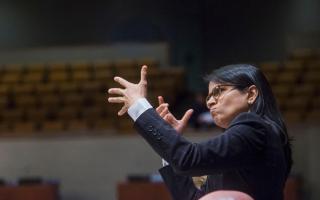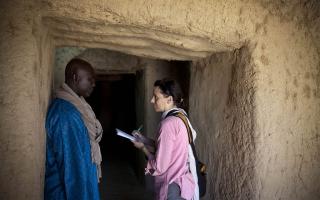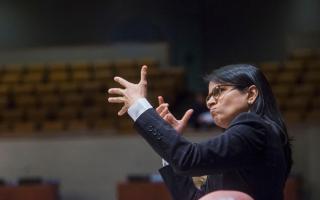Belbin Team Roles Profiles and Debriefing for Teams
The activity requires a minimum of 20 participants.
The Belbin Team Roles survey will help you
- Understand individual strengths and weaknesses: The exercise provides insights into each team member's unique strengths and weaknesses, enabling them to better understand their roles within the team.
- Identify team roles: Each team member has a specific Belbin Team Role based on their behavioural strengths and weaknesses. These roles help in understanding how each team member contributes to the overall success of the team.
- Improve communication and collaboration: By identifying individual roles and preferences, team members can communicate more effectively and work together more cohesively, enhancing overall team performance.
- Identify gaps and areas for improvement: The exercise helps highlight areas where the team might be lacking specific skills or strengths, allowing them to address these gaps and improve their overall capabilities.
- Allocate tasks effectively: With a clearer understanding of team roles and individual strengths, tasks and responsibilities can be assigned more efficiently to ensure optimal productivity.
- Foster mutual understanding and appreciation: The exercise helps team members recognize the value each person brings to the team, promoting a culture of respect, trust, and collaboration.
"What makes some teams succeed, and others fail"? This is the question posed by Dr. Meredith Belbin in the 1970s, when he carried out a unique study of teams. The most likely result was that high-intellect teams would succeed, whereas lower-intellect ones would not. In fact, the opposite happened: it was found that it was not intellect, but balance, which enabled a team to succeed. Teams characterized by the compatibility and complementarity of roles among their team members proved to be the most successful ones, while others were subject to role conflict.
The Belbin Team Roles are "clusters" of behaviours: if we want to progress and succeed at work, it is our behaviour that provides the key. It is important to stress that Belbin is not about personality, it is about behaviour. While it is difficult to change who we are as a person, we can always decide how we want to behave in a particular situation.
Belbin identified 9 clusters of behaviours, and called them "Team Roles". Each type has a typical behavioural strength and a characteristic weakness. All roles are equally valuable.
Discover what your preferred role is and find out what this means for yourself and your Team!
- Identify individual strengths and contributions: The survey helps individuals recognize their unique strengths and understand how they contribute to their team's overall performance. By identifying their natural tendencies and preferred roles, team members can better understand how they fit into the team dynamic and optimize their contributions.
- Enhance team performance: By understanding the strengths and weaknesses of each team member, the survey allows teams to allocate tasks and responsibilities more effectively. This knowledge helps teams leverage their collective strengths and address potential gaps, ultimately improving overall team performance and productivity.
- Improve communication and collaboration: The Belbin Team Roles survey helps team members understand their colleagues' preferred working styles, communication preferences, and areas of expertise. This understanding fosters improved communication, cooperation, and collaboration within the team, ultimately leading to better decision-making and problem-solving.
Online delivery of the Belbin team roles survey
1. Each team member to undertake the Belbin Team Roles survey:
- The UNSSC is accredited to use the Belbin platform to administer and deliver the Belbin Team Roles Assessment;
- The Belbin Team Roles survey will be launched once the Letter of Agreement is signed between UNSSC and the Client;
- The suggested timeframe for participants to complete the Belbin Team Roles survey is 2 weeks (to be confirmed upon signature of the Agreement).
This instrument also allows for one or multiple team reports to be generated. The Team report will take into account each individual report's result and will show you what your Team looks like, what is missing, what it could use more of.
2. Belbin Team Roles survey Debriefing Webinar (120 minutes);
The UNSSC Belbin Team will deliver a debriefing presentation to the Team members. The session will revolve around:
- Introducing the Belbin Team Roles (including their "allowable" and "non-allowable" weaknesses);
- Debriefing the Belbin Team Report for the entire team (in plenary);
- Debriefing of any other sub-teams in break-out rooms (if applicable);
o Wrap-up and way forward.
1. Introduction
- A short history of the Belbin Team Roles theory
- The perfect team vs. the perfect individual
- Problems with Teams
- Functional role vs. Team Role
- Allowable Weaknesses and Preferences
2. The Belbin Team Roles
- The 9 roles and their descriptions
- Team Roles opposites
- Benefits of the Belbin Team Role theory
3. Your Belbin report
- Team role overview: Self-perception
- Team role overview: self-perception and observation assessment
- Analysis of your Team role composition
- Comparing Self and Observer’s perceptions
- Your Team Role preferences
- Observed Team Role strengths and weaknesses
- Your observer’s responses
- Suggested work styles
4. Belbin Team report
- Group work – your team report
- How does it look like?
5. Practicing how to interpret the Belbin profiles
- Group work
6. Wrap-up and way forward
UN System's Teams, Units, Departments at all levels.
For more information and pricing, please email the Assessments and Coaching Team at act@unssc.org
Images reproduced with permission of Belbin Ltd



